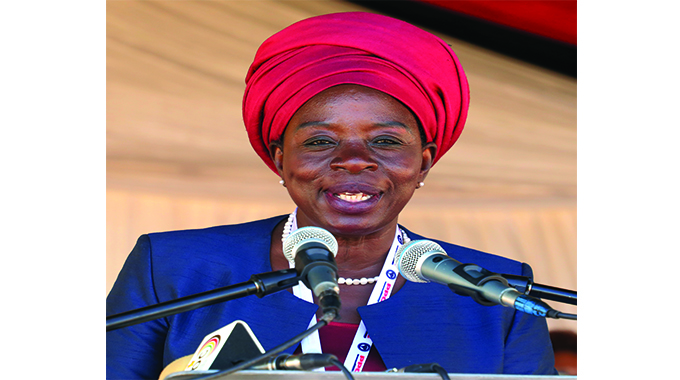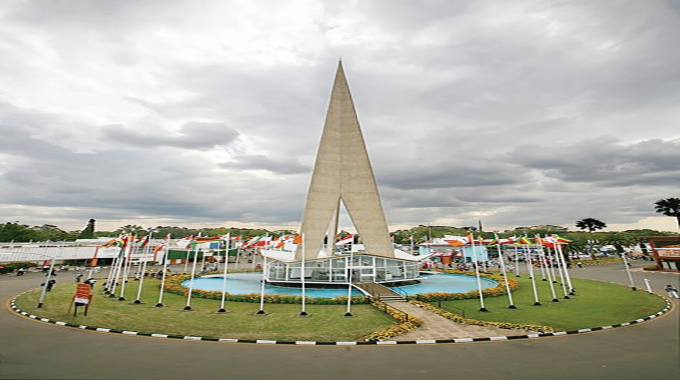The Chronicle

Nqobile Bhebhe, Senior Business Reporter
BULAWAYO’s leather industry is on a strong rebound after years of low productivity and the just ended Zimbabwe International Trade Fair (ZITF) has showed growing capacity by the sector to supply local and international markets.
Over and above the significant presence of the leather producers at the ZITF stands, the local players also exhibited improved product quality from a wide range of local hides.
Industry and Commerce Minister, Dr Sekai Nzenza, on Saturday applauded the improved standards saying this was an indication that the value addition and buy local drive was fast gaining traction.
 Minister of Industry and Commerce, Dr Sekai Nzenza
Minister of Industry and Commerce, Dr Sekai Nzenza“The exciting part of ZITF was to see those high-quality shoes and other leather products on display,” she said during her closing address to the media.
The minister said in the past huge quantities of raw hides used to be exported to Europe but with the launch of the leather value strategy, leather is being processed locally feeding into the value addition matrix.
Over the years, due to a myriad of operational challenges and the latest Covid-19 impact, output had largely remained subdued.
At its prime in the 1990s, the sector produced up to eight million pairs of shoes but most of the established manufacturing firms later folded citing different factors.
However, with Government interventions that included the launch of the Zimbabwe Leather Sector Strategy (2021-2030) to anchor increased investments and maximising on value-addition and beneficiation to promote export-led industrialisation, the sector is now on a recovery path.
Speaking in separate interviews at their stands last week, local leather producers said the ZITF platform, which ran under the theme: “Rethink, Reimagine, Reinvent Value Chains for Economic Development”, has opened up trading opportunities for them.

Bulawayo Leather Cluster marketing officer, Mr Joseph Mukondo, said leather producers came together as former workers of the once big leather firms in the city to form the Bulawayo leather cluster.
“Through financial support from Comesa we bought equipment and we now have a factory.
Comesa also assisted us by arranging training workshops and having us exhibit in Botswana and Zambia,” he said
“We now supply major retail outlets in Bulawayo with various products and also do exports.
“At ZITF we have made contact with several potential buyers and for us it’s an indication that the leather sector is recovering.”
Ms Gaudencia Fundo of Sunrise Leather Goods said while the sector possesses more opportunity, licences for exotic leather products were exorbitant for SMEs players as annual fees range between US$800 and US$1 200.
“I specialise in leather belts and also work on exotic leather but the major challenge I am facing is permits from the Zimbabwe National Parks,” she said.

However, she said by exhibiting at the trade fair she managed to get orders from potential customers.
Another exhibitor, Mr Thomas Mupingo said judging by high levels of inquiries and modest sales, he expressed confidence that the leather sector is recovering and buttressed the need for value addition and buying local products.
“For the sector to experience more accelerated growth, there is a great need to implement the value chain from livestock farmers, how livestock is bred, slaughtered and preservation of hides,” he said.
“When we all put maximum effort throughout the stages, utilising our abundant resources, I am confident that the final product would be of superior quality.
That high-quality end product is much sought after in European markets.”
Mr Mupingo, however, said funding from local financial institutions remains a challenge “I am appealing to the Government to dialogue with banks to reduce loan requirements for SMEs.
We have the potential to earn foreign currency for the country but with limited financial resources to procure raw materials and equipment we will struggle,” he said.
ZimTrade southern region manager, Mrs Jacqueline Nyathi, said the leather sector was one of their priority areas and a lot of effort has been made to support it to be export-oriented.
 ZimTrade southern region manager, Mrs Jacqueline Nyathi
ZimTrade southern region manager, Mrs Jacqueline NyathiShe said the Bulawayo leather cluster has gone through several training programmes and an initiative to capacitate them to build a brand has kicked off.
“As much as they are getting export inquiries, they need to have a brand that tells a story about who they are,” said Mrs Nyathi.
“We have experts to assist them in going through the whole process.
We are confident that once they have a brand, which they relate to it would aid their marketing strategies.”
On exotic fee challenges, she said a trade lobby group has engaged Zimparks on the matter.
“As ZimTrade we can only lobby ZimParks but the final decision to reduce rests with them.
But we have made representations to Zimparks highlighting how it’s affecting exports,” said Mrs Nyathi.
“For one to get an annual US$800 fee for a single outlet we feel it’s rather too exorbitant.
“We have made it clear to ZimParks to consider lowering the charges making them affordable to players and there will be an improved business.”
The leather sector is regarded as low-hanging fruit for the Zimbabwean economy given the country’s competitive advantages in livestock and crop production, which provide key raw materials.
Article Source: The Chronicle
